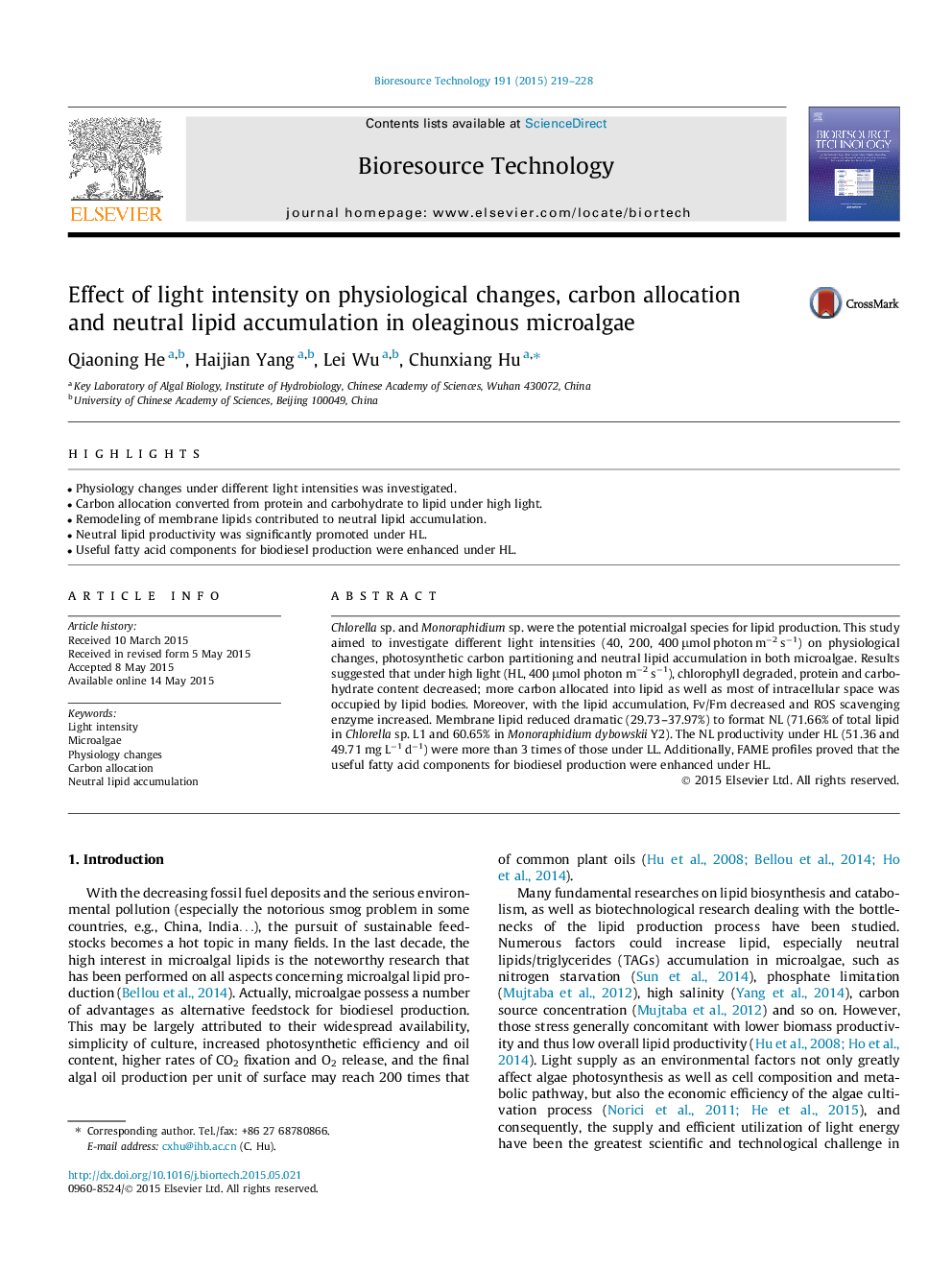| Article ID | Journal | Published Year | Pages | File Type |
|---|---|---|---|---|
| 679589 | Bioresource Technology | 2015 | 10 Pages |
Abstract
Chlorella sp. and Monoraphidium sp. were the potential microalgal species for lipid production. This study aimed to investigate different light intensities (40, 200, 400 μmol photon mâ2 sâ1) on physiological changes, photosynthetic carbon partitioning and neutral lipid accumulation in both microalgae. Results suggested that under high light (HL, 400 μmol photon mâ2 sâ1), chlorophyll degraded, protein and carbohydrate content decreased; more carbon allocated into lipid as well as most of intracellular space was occupied by lipid bodies. Moreover, with the lipid accumulation, Fv/Fm decreased and ROS scavenging enzyme increased. Membrane lipid reduced dramatic (29.73-37.97%) to format NL (71.66% of total lipid in Chlorella sp. L1 and 60.65% in Monoraphidium dybowskii Y2). The NL productivity under HL (51.36 and 49.71 mg Lâ1 dâ1) were more than 3 times of those under LL. Additionally, FAME profiles proved that the useful fatty acid components for biodiesel production were enhanced under HL.
Related Topics
Physical Sciences and Engineering
Chemical Engineering
Process Chemistry and Technology
Authors
Qiaoning He, Haijian Yang, Lei Wu, Chunxiang Hu,
